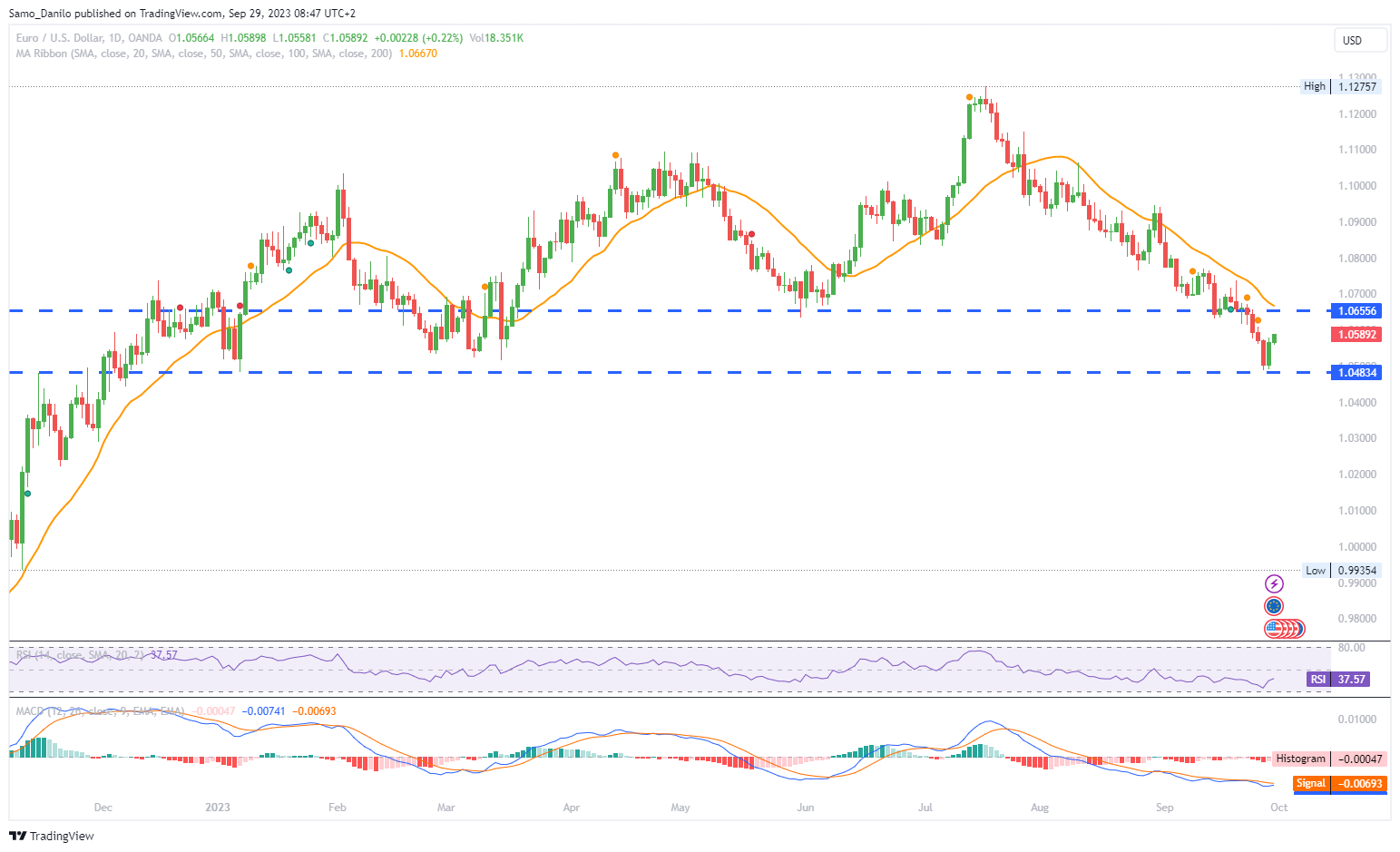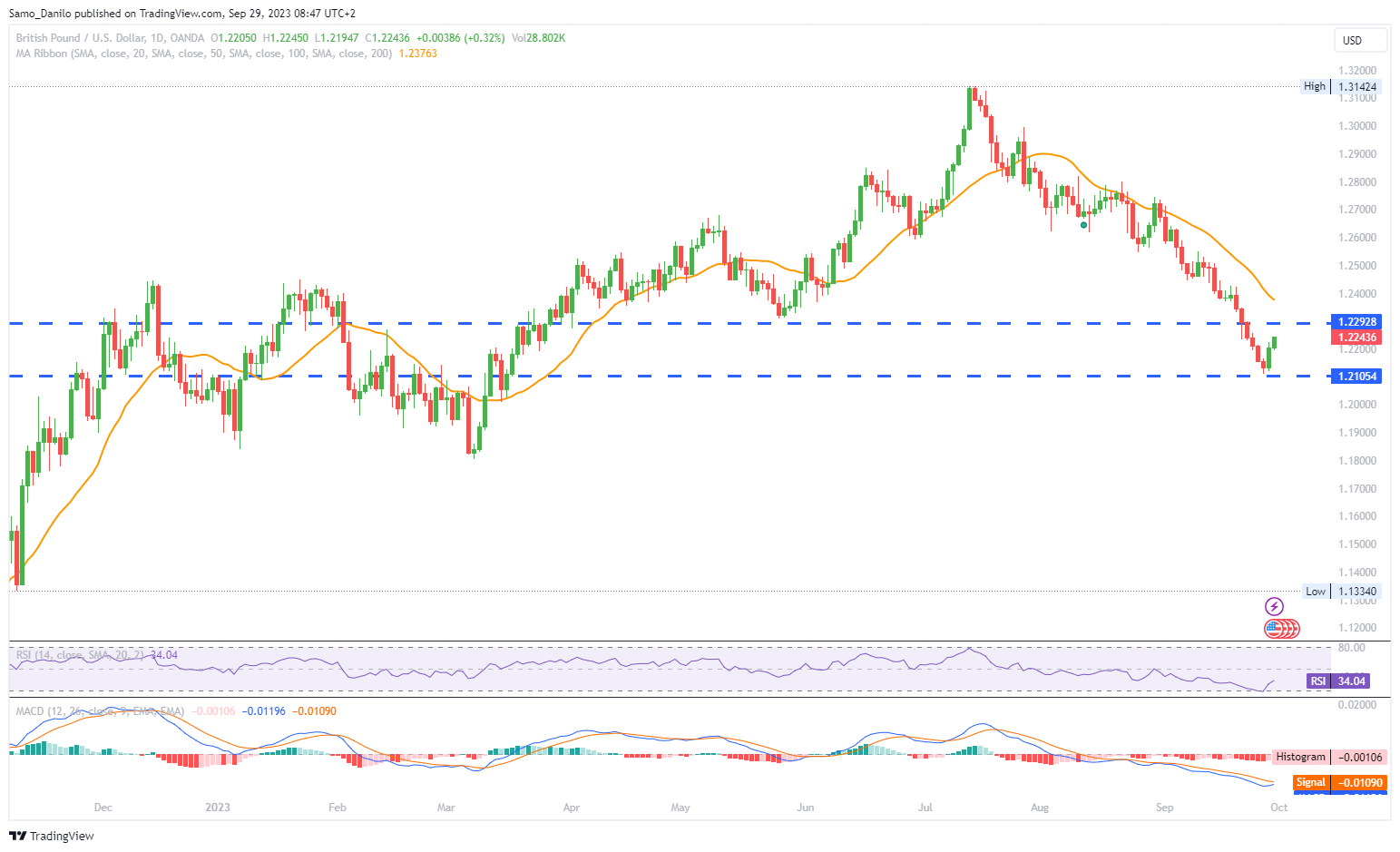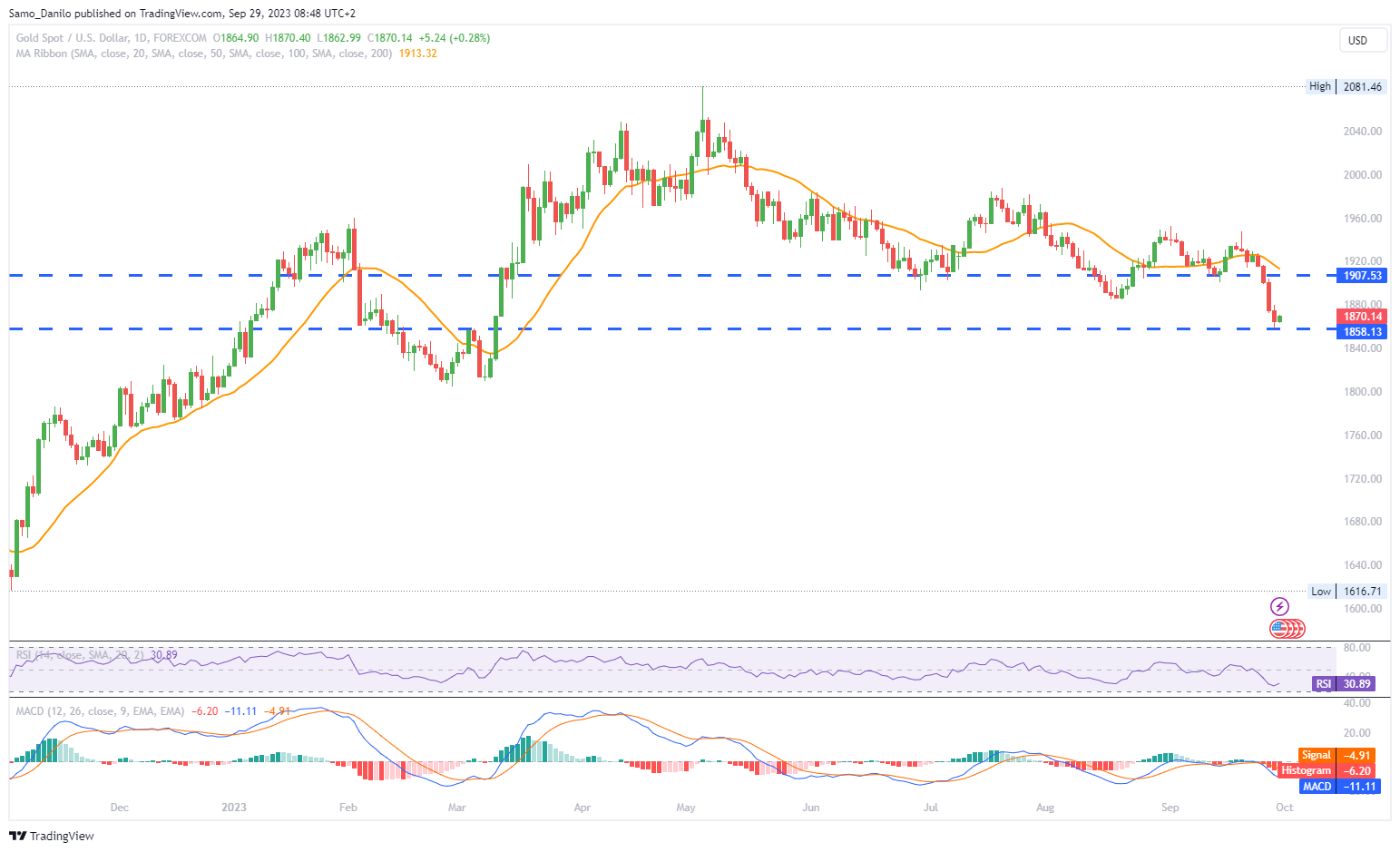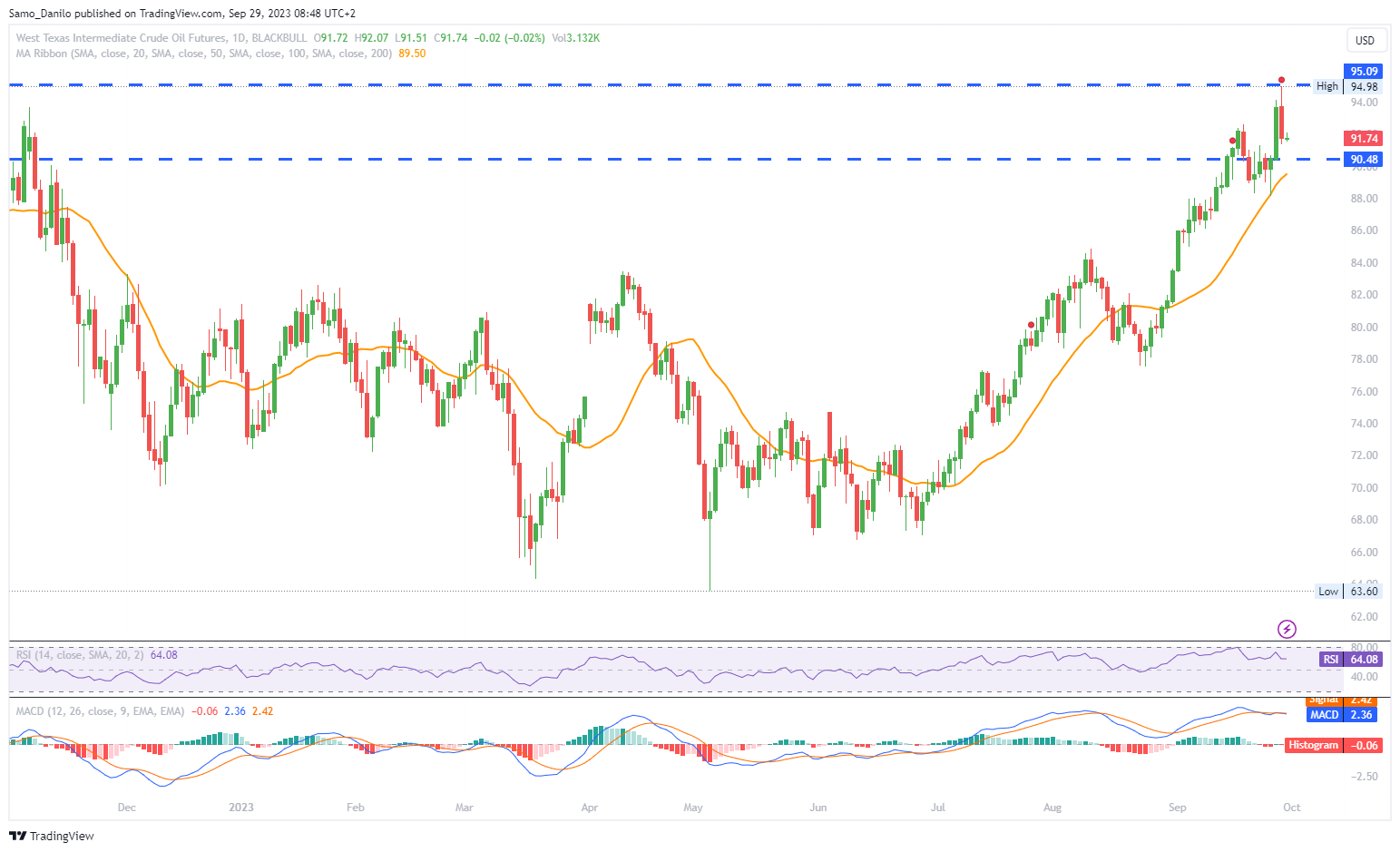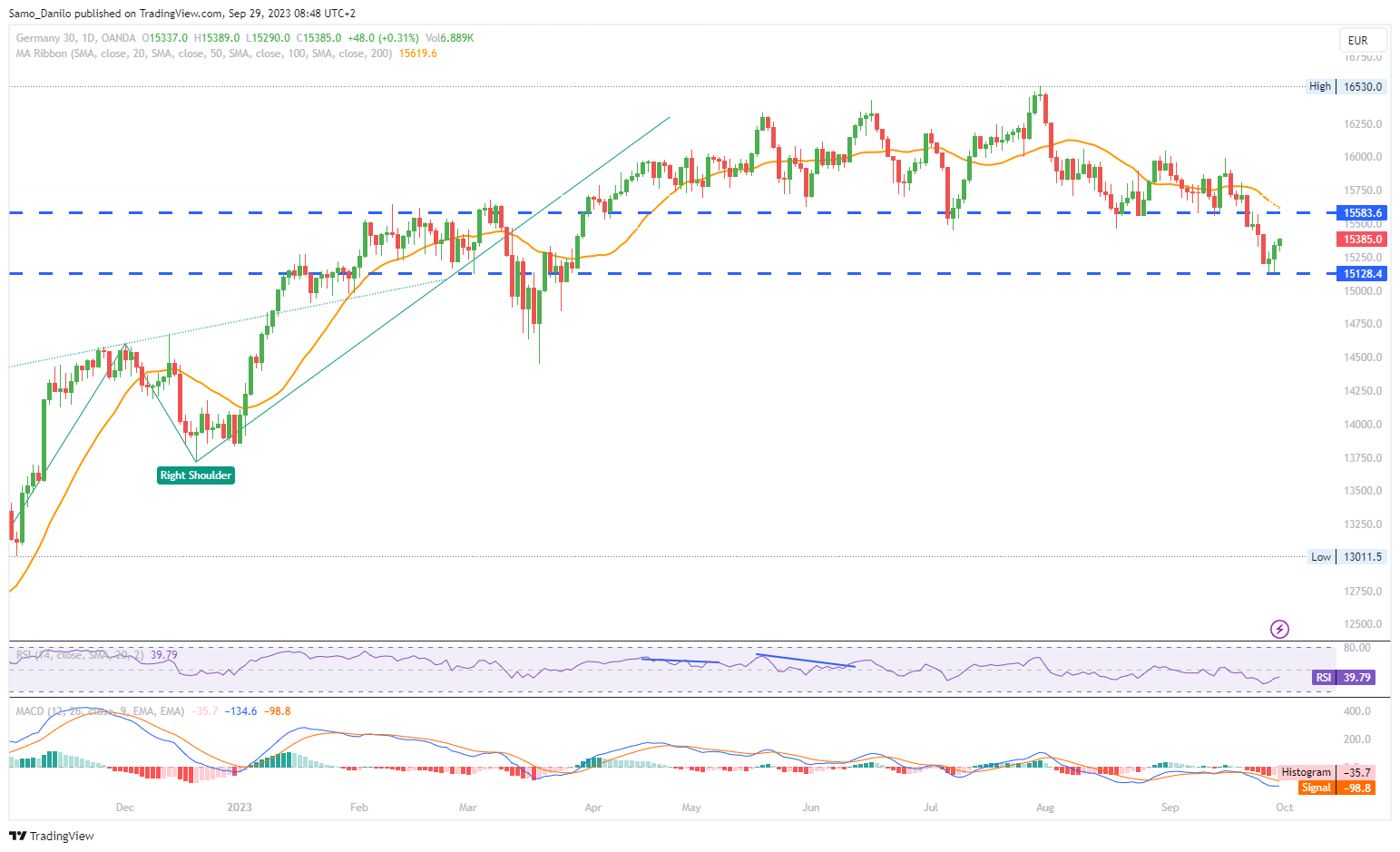EURUSD
- On Thursday, the EUR/USD pair saw a significant upward movement, rebounding from monthly lows and approaching the 1.0600 level. This rise was primarily attributed to a correction in the US Dollar, which had been on a prolonged uptrend.
- While the US economy continued to show strength, with second-quarter GDP growth data indicating a 2.1% annualized rate of expansion and Initial Jobless Claims coming in lower than expected at 204,000, market sentiment seemed to weigh on the US Dollar. Despite the positive economic data, traders took a pause in their bullish USD positions.
- Comments from members of the European Central Bank (ECB) had limited impact on the Euro. Market expectations are currently leaning toward no rate hike in October, with only small odds for a rate increase in December. The prevailing perception is that the ECB has reached its peak in terms of interest rates.
- On Friday, Eurostat is set to release the Eurozone Harmonized Index of Consumer Prices. Expectations are for a headline rate of 4.5%, down from 5.2%, and a core rate of 4.8%, down from 5.3%. This data will be closely watched, as it could influence the ECB's future monetary policy decisions.
Closing statement: The EUR/USD pair experienced a sharp rise driven by a correction in the US Dollar. Strong US economic data and market sentiment were factors in the Dollar's pause. The Eurozone inflation data release on Friday will be a critical event to monitor for potential market impact and its implications for ECB policy decisions.
GBPUSD
- The GBP/USD pair has seen some positive momentum for the second consecutive day on Friday. It is looking to extend the recovery that began after bouncing from its lowest level since March 17.
- The US Dollar Index (DXY), which measures the dollar's performance against six major currencies, remains under pressure and is trading below its year-to-date peak set earlier in the week. This weakening of the US Dollar is partly attributed to Thursday's somewhat lackluster US economic data.
- Despite the Dollar's weakness, the US macroeconomic data continues to indicate a resilient economy. This reinforces the Federal Reserve's (Fed) commitment to maintaining higher interest rates for an extended period.
- British gross domestic product (GDP) for the second quarter of 2023 showed a 0.2% increase compared to the previous quarter, as reported by the Office for National Statistics. This data suggests some economic growth in the UK.
- The Bank of England (BoE) has provided a few hints regarding its intentions to further raise interest rates. This lack of clear guidance from the central bank may prompt caution among bullish traders.
| SMA (20) | Falling |
|
|
| RSI (14) | Rising |
|
|
| MACD (12, 26, 9) | Slightly Rising |
|
Closing statement: GBP/USD is experiencing some positive momentum, partly due to weakness in the US Dollar. While US economic data still reflects a strong economy, the lack of clear guidance from the Bank of England regarding future rate hikes adds an element of caution for traders.
GOLD
- Gold is currently in a bearish consolidation phase during the Asian session on Friday. It's trading near a seven-month low that was reached earlier in the week. The precious metal is awaiting key U.S. inflation data, which is likely to influence its direction.
- From a technical perspective, the Relative Strength Index (RSI) on the daily chart is signaling oversold conditions. This suggests that waiting for some near-term consolidation or a modest bounce before positioning for further losses might be prudent.
- Several factors are influencing gold's movements. There are increasing odds of a partial U.S. government shutdown on October 1, which poses a risk to the economy. Additionally, persistent concerns about a real estate crisis in China are contributing to the demand for safe-haven assets like gold.
- The most significant economic release of the week will be the Core Personal Consumption Expenditure Price Index. If this data shows evidence of a rebound in inflation, it could trigger a rally in the U.S. Dollar across the board.
- The U.S. central bank has recently warned that persistently high inflation is likely to lead to at least one more interest rate hike by the end of the year.
| SMA (20) | Slightly Falling |
|
|
| RSI (14) | Slightly Rising |
|
|
| MACD (12, 26, 9) | Falling |
|
|
Closing statement: Gold is currently in a consolidation phase near a seven-month low, awaiting U.S. inflation data. Technical indicators suggest an oversold condition, but the direction will likely be influenced by economic data and factors such as the potential government shutdown and the real estate situation in China.
CRUDE OIL
- Western Texas Intermediate (WTI), the U.S. crude oil benchmark, is currently trading around $91.50 on Friday. It has lost traction after retreating from a 12-month high of $95. This pullback is primarily attributed to concerns among investors about the impact of higher interest rates on oil consumption.
- Despite these concerns, oil prices have found support from improving macroeconomic data in China, the world's largest oil importer. Additionally, strong fuel demand has been observed in China as the country embarked on its week-long Golden Week holiday. Domestic travel during this holiday is expected to boost demand further.
- China's factory activity is predicted to have steadied in September, according to a Reuters poll. This suggests that the world's second-largest economy is stabilizing, which could further bolster oil demand. Official data on this is expected on Saturday.
- Traders are keeping a close eye on next week's meeting of the Organization of the Petroleum Exporting Countries and its allies (OPEC+). This group will discuss whether to adjust oil supply levels. There is particular interest in whether Saudi Arabia might increase its supply following the recent nearly 30% jump in oil prices during this quarter.
| SMA (20) | Rising |
|
|
| RSI (14) | Neutral | ||
| MACD (12, 26, 9) | Slightly Rising |
|
Closing statement: Oil prices have retreated from a recent 12-month high due to concerns about the impact of higher interest rates on oil consumption. However, support from strong fuel demand in China during the Golden Week holiday and positive economic indicators in China are contributing to the resilience of oil prices. The upcoming OPEC+ meeting will be closely watched for potential supply adjustments.
DAX
- On Thursday, the DAX index posted a gain of 0.70%, rebounding from a 0.25% loss experienced on the previous day.
- Data from Germany reveals that import prices in August witnessed the largest year-on-year decline since November 1986. Import prices decreased by 16.4% year on year in August, aligning with analysts' expectations based on a Reuters poll.
- The upcoming Eurozone inflation figures must be in sync with the German inflation numbers reported on Thursday. If Eurozone inflation turns out to be hotter than expected, it could unsettle investors, particularly before the start of the U.S. trading session.
- ECB President Christine Lagarde is scheduled to speak today. Her remarks will be closely monitored, particularly regarding the central bank's stance on inflation and monetary policy. If she reiterates the "higher for longer" policy, it will need consideration but likely wouldn't surprise the markets.
- The DAX index remains positioned below the 50-day and 200-day Simple Moving Averages (SMAs), which suggests bearish price signals. A further decline below the 15,228 support level could open the door for the bears to target the 15,020 support level.
| SMA (20) | Slightly Falling |
| |
| RSI (14) | Slightly Rising |
|
|
| MACD (12, 26, 9) | Neutral |
Closing statement: The DAX index rebounded on Thursday, but it's still facing bearish pressure. German import prices saw a significant decline, reflecting economic challenges. Upcoming Eurozone inflation figures and ECB President Lagarde's remarks will be pivotal for market sentiment. The technical outlook suggests a bearish stance if key support levels are breached.
